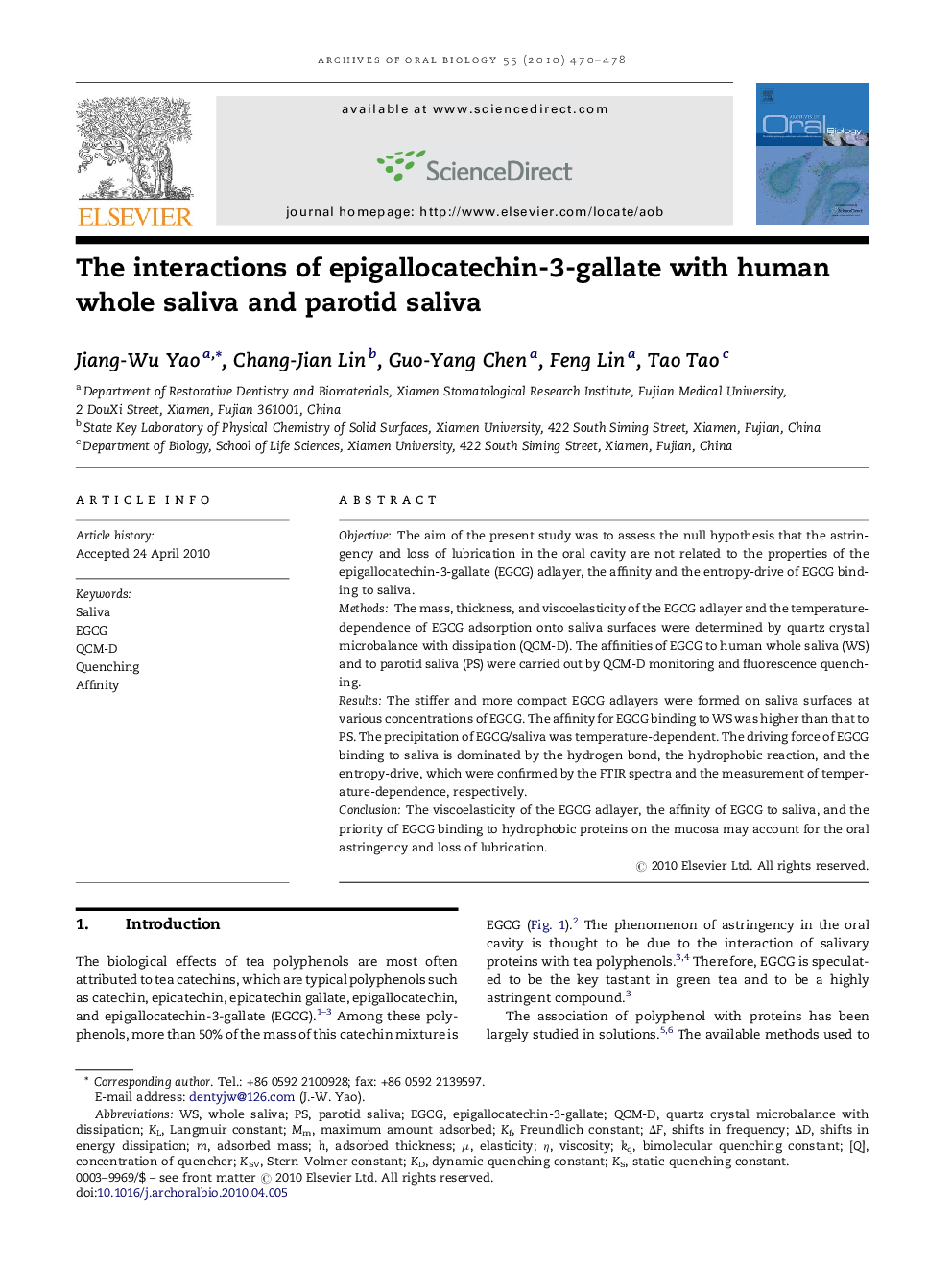| Article ID | Journal | Published Year | Pages | File Type |
|---|---|---|---|---|
| 3121066 | Archives of Oral Biology | 2010 | 9 Pages |
ObjectiveThe aim of the present study was to assess the null hypothesis that the astringency and loss of lubrication in the oral cavity are not related to the properties of the epigallocatechin-3-gallate (EGCG) adlayer, the affinity and the entropy-drive of EGCG binding to saliva.MethodsThe mass, thickness, and viscoelasticity of the EGCG adlayer and the temperature-dependence of EGCG adsorption onto saliva surfaces were determined by quartz crystal microbalance with dissipation (QCM-D). The affinities of EGCG to human whole saliva (WS) and to parotid saliva (PS) were carried out by QCM-D monitoring and fluorescence quenching.ResultsThe stiffer and more compact EGCG adlayers were formed on saliva surfaces at various concentrations of EGCG. The affinity for EGCG binding to WS was higher than that to PS. The precipitation of EGCG/saliva was temperature-dependent. The driving force of EGCG binding to saliva is dominated by the hydrogen bond, the hydrophobic reaction, and the entropy-drive, which were confirmed by the FTIR spectra and the measurement of temperature-dependence, respectively.ConclusionThe viscoelasticity of the EGCG adlayer, the affinity of EGCG to saliva, and the priority of EGCG binding to hydrophobic proteins on the mucosa may account for the oral astringency and loss of lubrication.
